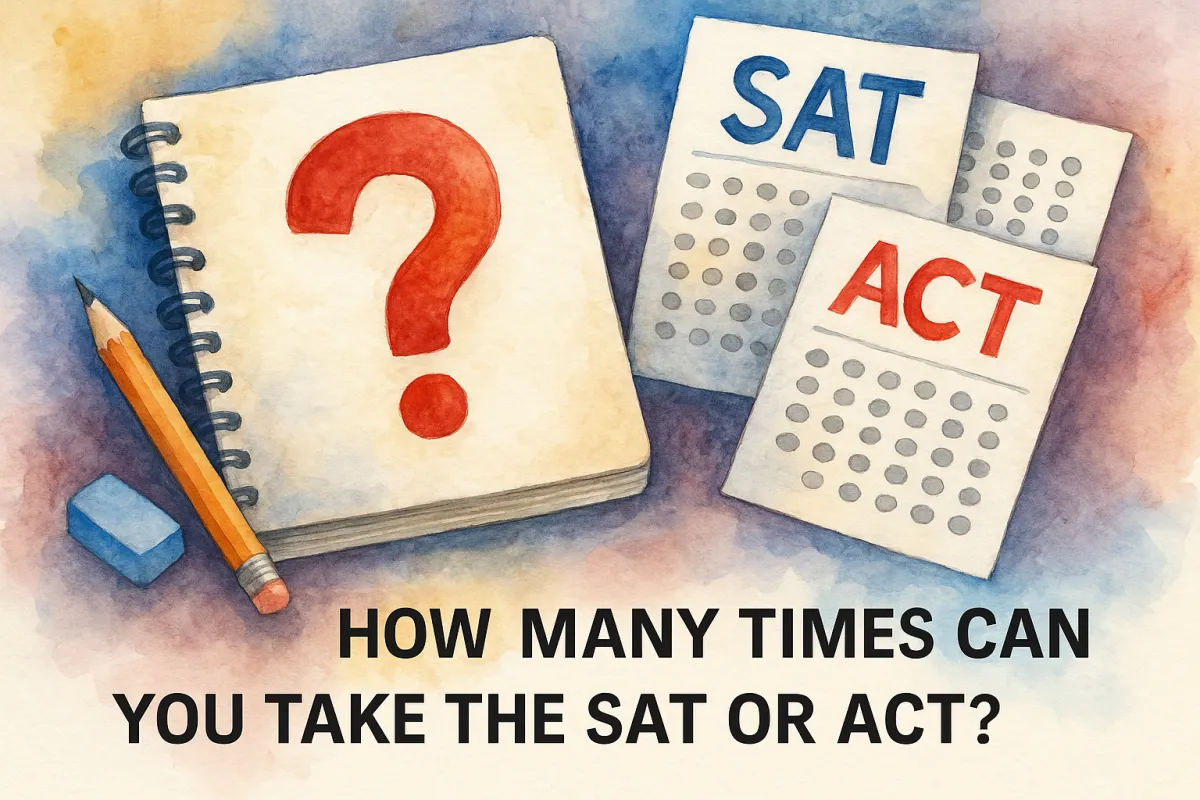
How Many Times Can You Take the SAT or ACT? (And What I Tell Every Parent About Test Strategy)
How Many Times Can You Take the SAT or ACT?
(And What I Tell Every Parent About Test Strategy)
Let me tell you something most test prep companies won’t: Motivation is overrated. Movement matters more.
I’ve been coaching families for over two decades now, and if there’s one pattern I’ve seen repeat itself over and over—it’s the "we'll start later" mindset. That mindset delays progress, costs scholarships, and kills confidence.
And when it comes to college admissions or scholarship dollars, the two biggest tests most families deal with are the SAT and ACT.
So let’s talk real strategy.
How Many Times Can You Take the SAT or ACT?
Understanding official test limits (and why they don’t matter as much as you think)
SAT: You can take the SAT as many times as you want. There’s no official limit.
ACT: You can take the ACT up to 12 times.
The real question isn’t how many times you can take them—it’s how many times you should.

How Many Times Should You Take the SAT or ACT?
The smart approach to retesting and building scholarship potential
Most students see the best results after 2 to 3 attempts.
I advocate for continuing to test until you hit scholarship-level results—because each round gives you more than just a score:
Familiarity with the test format
Opportunities to apply focused prep
Access to super-scoring, where colleges combine your best section scores from multiple attempts
“Don’t practice until you get it right. Practice until you can’t get it wrong.”
SAT & ACT Testing Calendars (2024–2025)
Plan ahead with official test dates
SAT is offered seven times per year:
March, May, June, August, October, November, December
ACT is offered seven times per year:
February, April, June, July, September, October, December
Plan early. Schedule strategically. And leave room for improvement.

SAT vs. ACT: Which One Should Your Student Take?
Comparing test styles, pacing, and strategy

Quick Tip:
ACT tends to favor fast movers and science thinkers.
SAT works better for methodical readers and problem-solvers.
And no—colleges don’t prefer one over the other. They accept both.
Suggested SAT/ACT Timeline for Homeschool & High School Families
A year-by-year guide to building skill and reducing stress
End of 8th Grade: Take a baseline ACT or SAT. No pressure—just a snapshot.
9th Grade: Retake once more to measure growth. Still no pressure.
10th Grade: Attempt a focused test after review and light prep.
11th Grade: Study with strategy. Test 1–2 times with intention.
12th Grade: Retest only if you’re chasing higher scholarship thresholds.
Early testing builds confidence, reduces anxiety, and gives students time to improve.
The CLEP Coach's Real Philosophy on Standardized Testing
Why test-taking is a skill—and how to build it early
Standardized tests aren’t the enemy. They’re tools.
“Standardized tests are really great at testing how well you take standardized tests.”
That’s not an insult. It’s an opportunity. Every time your student takes a test, they’re training their brain to get better at test-taking.
Here’s my real talk for parents:
Take tests early and often
Spend a little now to save thousands later
Focus on scholarship potential, not just admissions
Use early scores to inform CLEP credit planning
Compete against yourself—not the average
Forget supers-coring for now—chase your student’s personal bests
What If My Kid Struggles or Bombs a Test?
Why failure is the data you need to grow smarter

Good. Now you know where to grow.
When students underperform, I tell them:
“Now you’ve found the gap. Lean in. Learn it. Fix it. Come back stronger.”
Real Story: Craig
Craig was terrified of the ACT. I encouraged him to take a no-pressure practice run as a sophomore. He did surprisingly well. Two more attempts later, he earned a full-ride scholarship.
My Son Kendyll?
He took his first ACT in 8th grade and scored an 18—higher than most graduating seniors. By 11th grade, he raised that to a 28. That score helped pay for college.
SAT/ACT vs CLEP: When to Pivot for Credit and Savings
How to shift gears and turn testing into real college progress
The SAT and ACT help you get in to college.
CLEP helps you get through it faster—and often debt-free.
If your student is already mastering high school content that aligns with CLEP subjects, don’t wait.
“Master it once. Take the CLEP. Earn the credit. Move on.”
That’s how students graduate in 2–3 years instead of 4–6.
That’s how you beat the system—legally and strategically.
Your Move, Mom and Dad
Next steps to build momentum and avoid missed opportunities
If your teen is in 7th to 9th grade—start looking ahead.
If they’re in 10th or 11th grade—test smart and begin banking CLEP credits.
And if you’re unsure where to start:
Book a CLEP Strategy Session
Join the CLEP Mastermind Group
Download and follow the CLEP Credit Map for your student’s target degree
And remember:
Motivation fades. But movement? That builds momentum.
